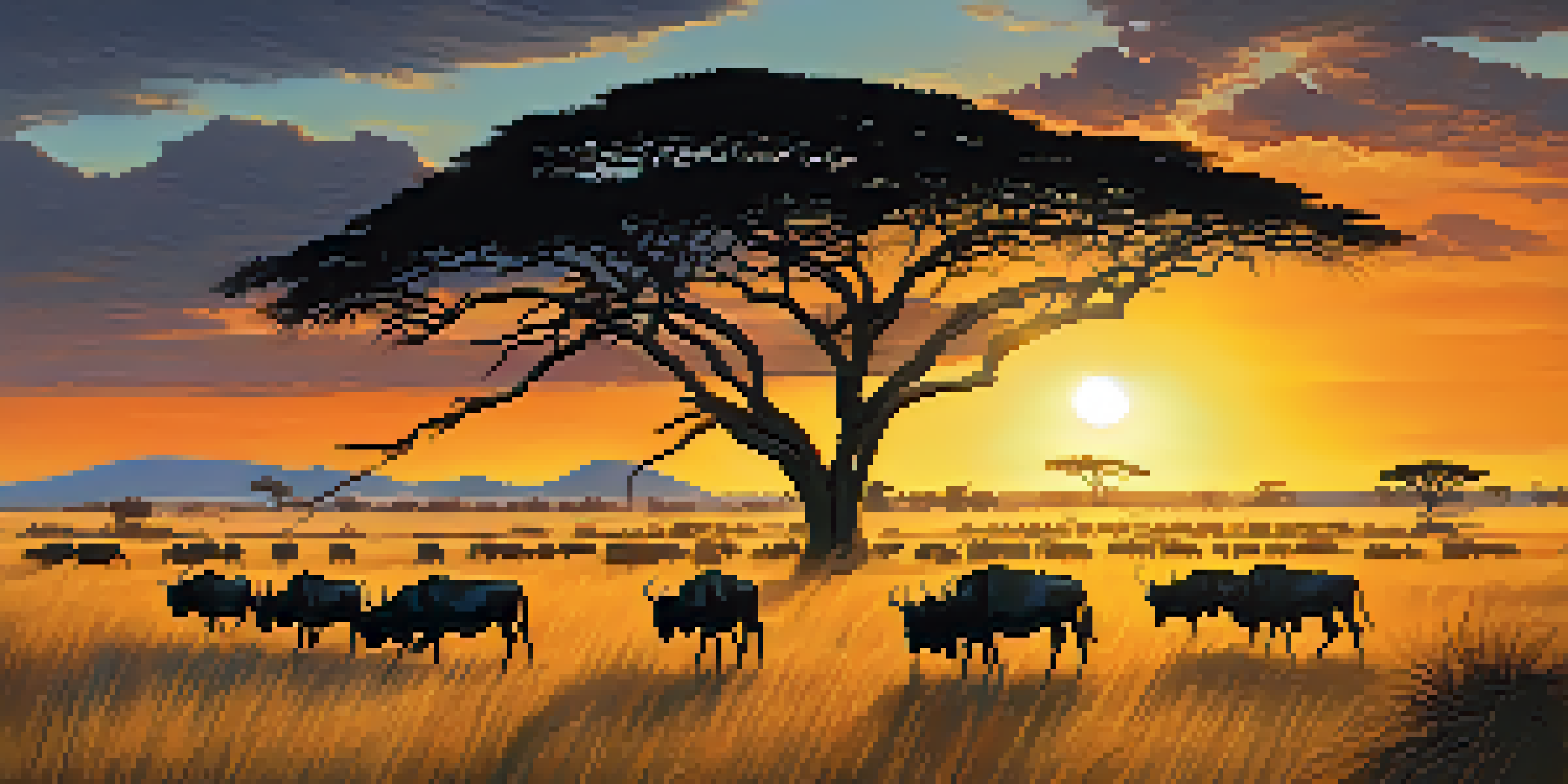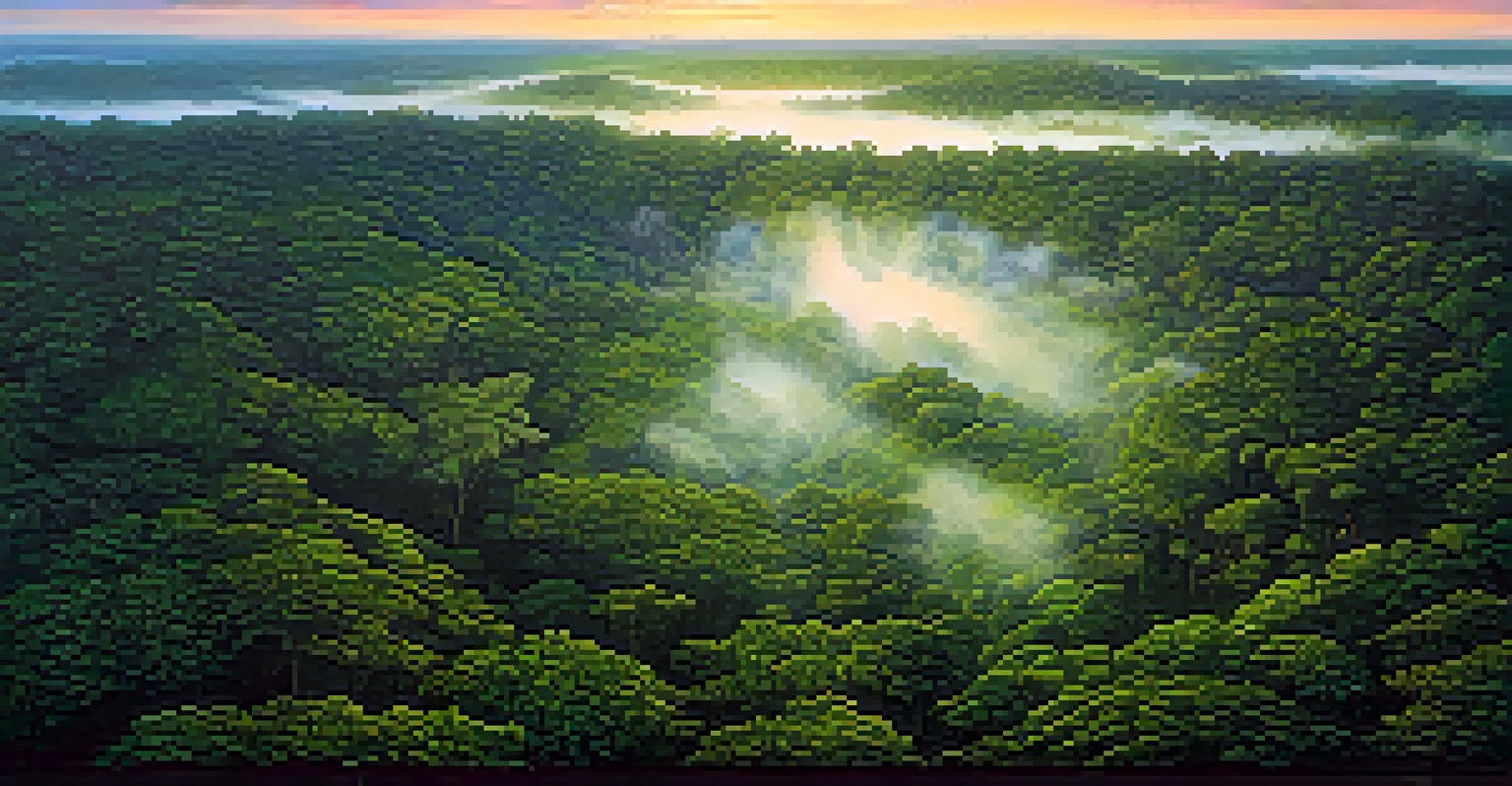Wildlife Photography: Best Destinations Around the World

The Serengeti: A Haven for Wildlife Enthusiasts
The Serengeti in Tanzania is often considered the gold standard for wildlife photography. Home to the Great Migration, it's a spectacular showcase of nature where millions of wildebeest, zebras, and other animals make their annual journey. Photographers flock here to capture breathtaking images of dramatic landscapes and vibrant wildlife interactions.
In every walk with nature one receives far more than he seeks.
In addition to the migration, the Serengeti is teeming with big cats, elephants, and a variety of birds. Early mornings and late afternoons provide the best light for photography, creating stunning contrasts against the golden grasslands. With patience and a bit of luck, you might even catch a lioness on a hunt or elephants playing in a waterhole.
For those wanting to go beyond just photography, the Serengeti offers guided tours that provide insights into animal behavior and ecosystems. This makes it not only a destination for stunning shots but also an educational experience. The blend of adventure, beauty, and wildlife makes the Serengeti a must-visit for any wildlife photographer.
Galápagos Islands: Nature's Living Laboratory
The Galápagos Islands are a paradise for wildlife photographers, thanks to their unique biodiversity. These islands are home to species found nowhere else on Earth, such as the giant tortoise and marine iguana. The close proximity of wildlife allows for incredible photography opportunities without disturbing the animals.

Photographers can capture stunning images of blue-footed boobies performing their courtship dance or the playful sea lions lounging on the beaches. The diverse landscapes, ranging from volcanic terrain to lush highlands, provide a backdrop for every shot. Whether you're underwater snapping photos of colorful fish or on land with giant tortoises, the Galápagos never disappoints.
Serengeti: Wildlife Photography Paradise
Home to the Great Migration, the Serengeti offers breathtaking landscapes and vibrant wildlife interactions ideal for photography.
Moreover, the Galápagos is not just about taking photos; it’s about understanding conservation efforts. Engaging with local guides can enrich your experience, teaching you about the fragile ecosystems and the importance of preserving these unique environments. The combination of photography and education makes the Galápagos a top choice for wildlife enthusiasts.
The Amazon Rainforest: A Biodiversity Hotspot
The Amazon Rainforest is often referred to as the 'lungs of the Earth' and is a treasure trove for wildlife photographers. With more species of plants and animals than any other place on the planet, every step in the Amazon offers new photographic opportunities. From vibrant macaws soaring through the canopy to elusive jaguars prowling the underbrush, the diversity is astonishing.
Photography is the story I fail to put into words.
Capturing the essence of the Amazon requires a bit of patience and an eye for detail. Early mornings are magical, as the forest awakens with the sounds of chirping birds and rustling leaves. Photographers can experiment with different techniques, such as macro photography to highlight the intricate beauty of insects and plants, or wide-angle shots to showcase the vastness of the rainforest.
Visiting the Amazon also allows photographers to learn about the indigenous cultures and their connection to the environment. This adds depth to your photography as you can capture not just the wildlife but also the stories of the people who live in harmony with it. The Amazon is a place where every click of the shutter tells a story, making it a vital destination for wildlife photography.
Antarctica: The Ultimate Wilderness Adventure
Antarctica is perhaps the most remote and breathtaking destination for wildlife photography. Its stark beauty, with icy landscapes and dramatic icebergs, offers a backdrop like no other. Here, photographers can capture images of penguins waddling on the ice, seals lounging, and whales breaching in the frigid waters.
The best time to visit Antarctica is during the summer months when wildlife is most active. Photographers often find themselves captivated by the antics of Emperor penguins or the majesty of a soaring albatross. The sheer isolation and tranquility of the continent add an almost magical quality to your photographs.
Galápagos: Unique Biodiversity Hub
The Galápagos Islands provide incredible opportunities to capture diverse wildlife while promoting conservation awareness.
However, reaching Antarctica is an adventure in itself, typically involving a cruise from South America. This journey allows you to connect with fellow wildlife photographers and share tips along the way. The experience of photographing wildlife in such an untouched environment is invaluable, making Antarctica a bucket-list destination for many.
Yellowstone National Park: A Diverse Ecosystem
Yellowstone National Park, the first national park in the world, is a gem for wildlife photographers in the United States. Spanning over 3,400 square miles, it’s home to an incredible variety of wildlife, including bison, elk, bears, and wolves. The park's diverse landscapes, from geysers to lush forests, provide a stunning backdrop for photography.
The best times for wildlife photography in Yellowstone are during the early morning and late afternoon when animals are most active. The golden hour light can enhance your images, adding warmth and depth. Additionally, the park's geothermal features create unique opportunities for creative shots, blending nature’s beauty with its raw power.
Yellowstone also offers numerous ranger-led programs that can deepen your understanding of the park’s ecosystems. Learning about animal behavior and park history can enhance your photography as you become more aware of your subjects. With its stunning scenery and rich wildlife, Yellowstone is a must-visit for any aspiring wildlife photographer.
Kruger National Park: A Safari Photographer's Dream
Located in South Africa, Kruger National Park is one of Africa's largest game reserves and a prime destination for wildlife photography. With a plethora of wildlife species, including the 'Big Five'—lion, leopard, elephant, buffalo, and rhinoceros—photographers can capture thrilling moments in the wild. The park's diverse habitats also mean varied opportunities for stunning shots.
Self-driving safaris allow photographers to explore at their own pace, making it easy to stop for that perfect shot. Early morning game drives often yield the best sightings, as animals are more active during cooler hours. The golden light of dawn adds a magical touch to your photos, elevating even the simplest scenes.
Antarctica: Remote Adventure Awaits
Antarctica's stunning icy landscapes and unique wildlife make it a breathtaking destination for wildlife photographers.
Additionally, Kruger National Park offers a range of accommodation options, from luxury lodges to campsites. This flexibility allows photographers to immerse themselves in the wildlife experience, often leading to unexpected photo opportunities. With its incredible landscapes and abundant wildlife, Kruger National Park is truly a photographer's paradise.
The Arctic: Capturing the Beauty of Ice and Wildlife
The Arctic region is one of the last frontiers for wildlife photographers, offering a unique opportunity to capture dramatic landscapes and fascinating wildlife. From polar bears roaming the ice to colorful puffins nesting on cliffs, the Arctic is a haven for those looking to document nature's beauty. The stark contrast of white glaciers against blue waters creates stunning visuals.
Visiting the Arctic requires careful planning, as conditions can be unpredictable. Summer is the best time to visit when the days are long and the wildlife is active, making it ideal for photography. The low angle of the sun during this time also enhances the quality of light, perfect for capturing breathtaking shots.

Photographers can choose from various expeditions that offer guided tours to ensure a safe and informative experience. Engaging with local guides can enhance your understanding of the fragile ecosystems and the challenges they face. The Arctic is more than just a destination; it's a reminder of nature's magnificence and the importance of conservation.